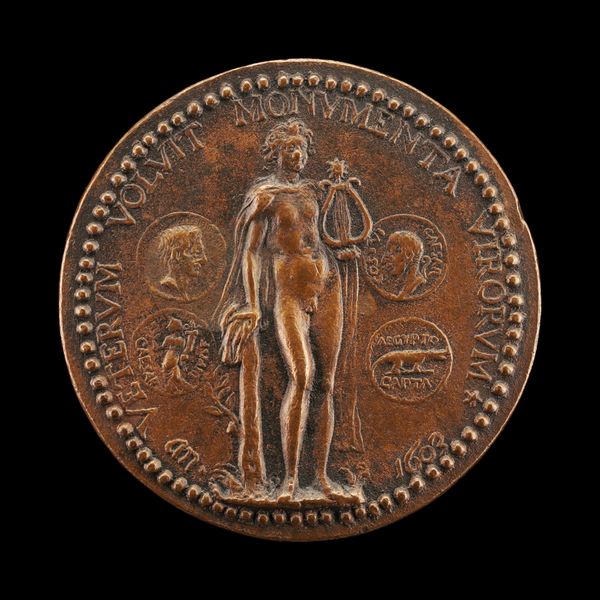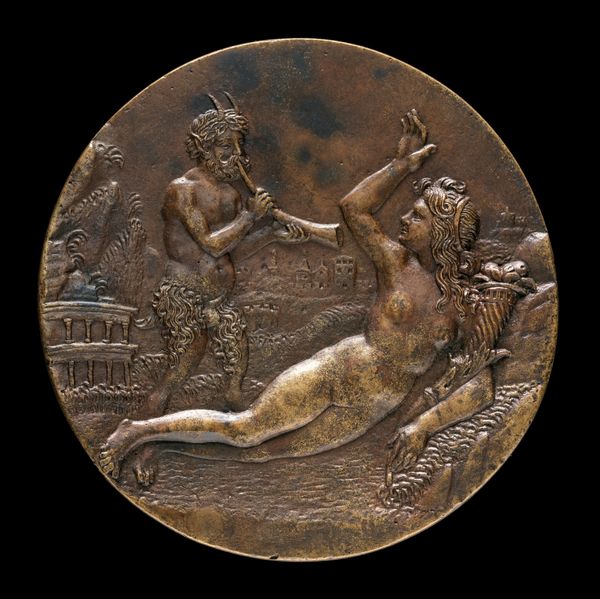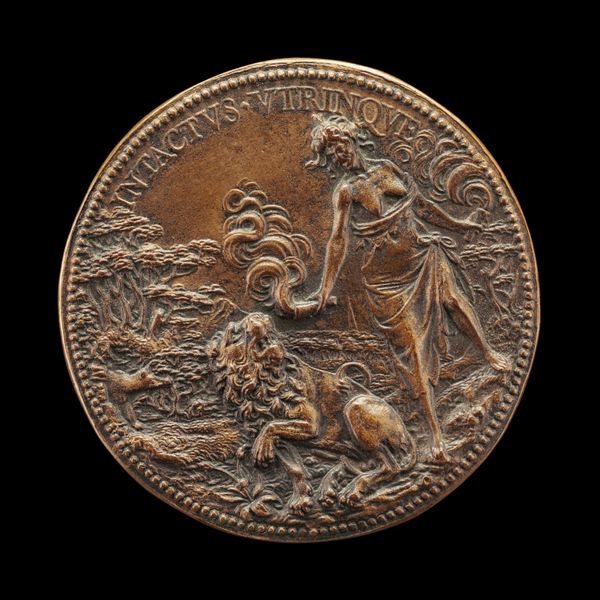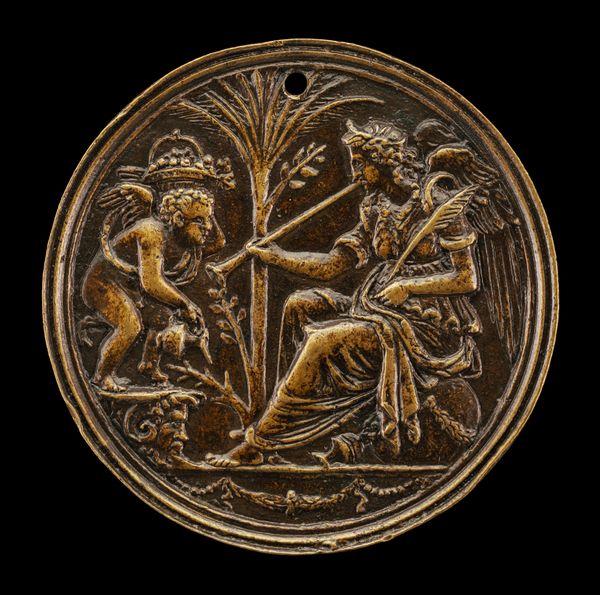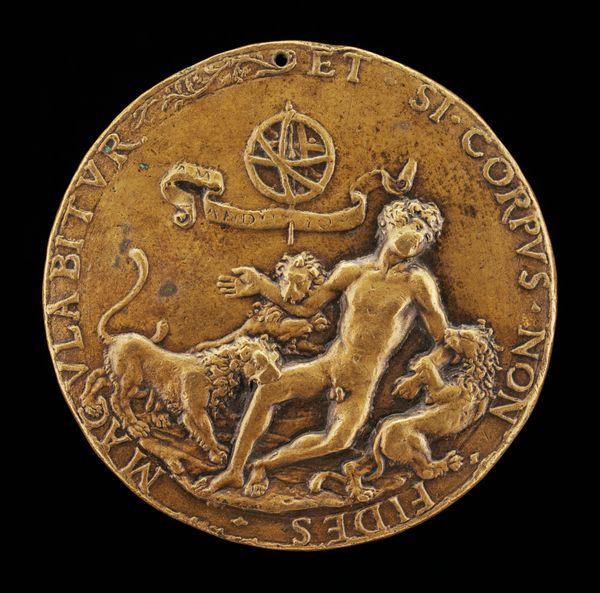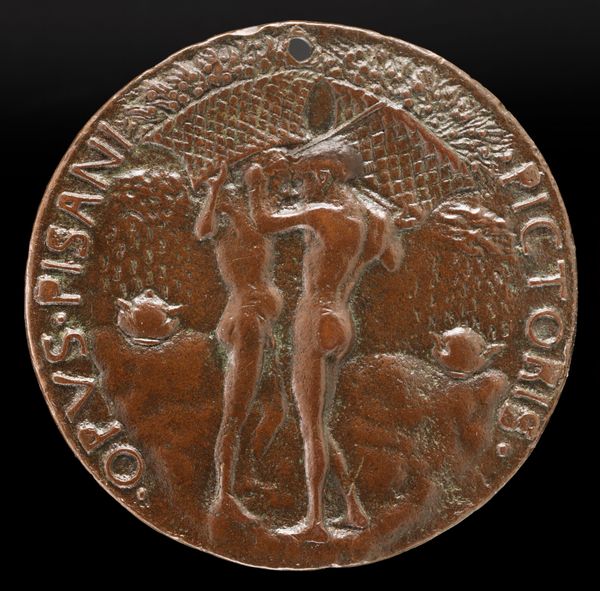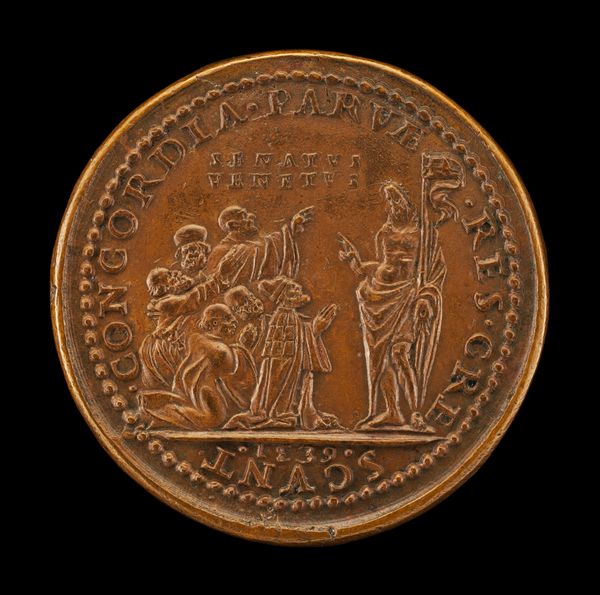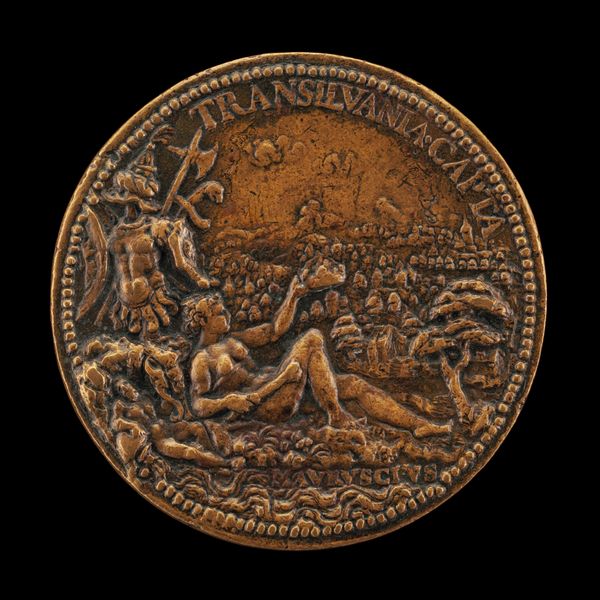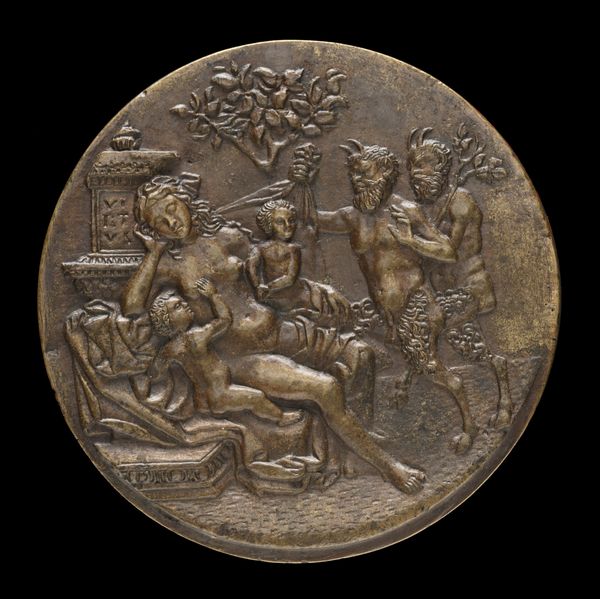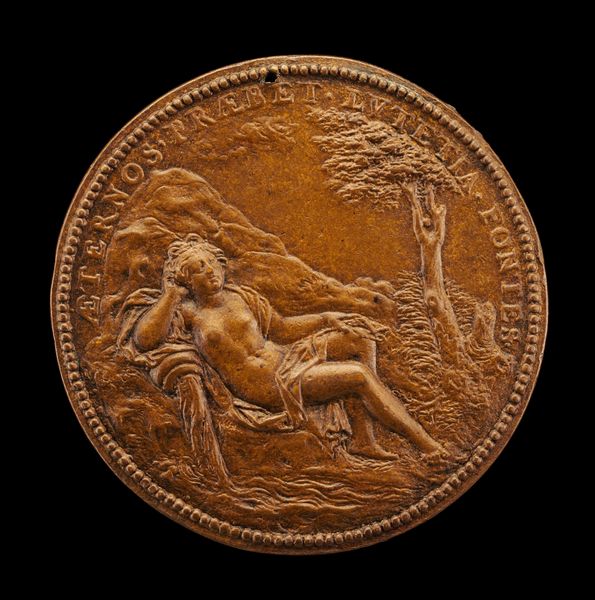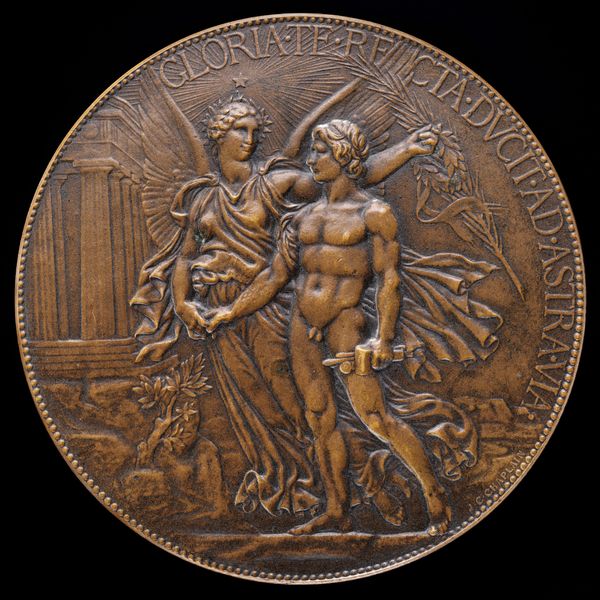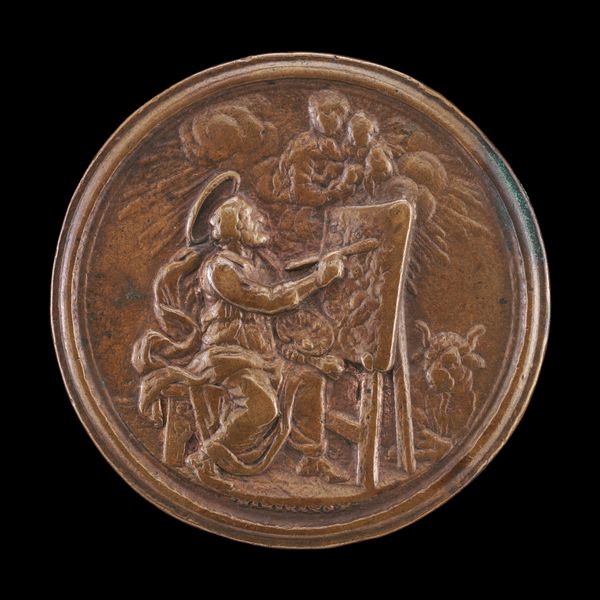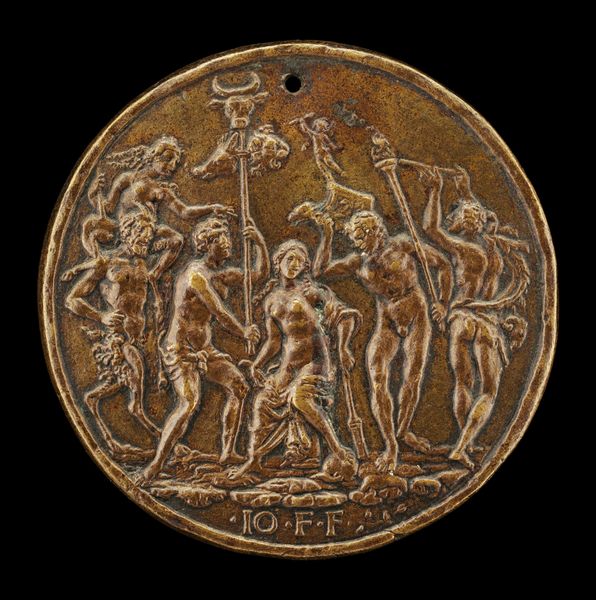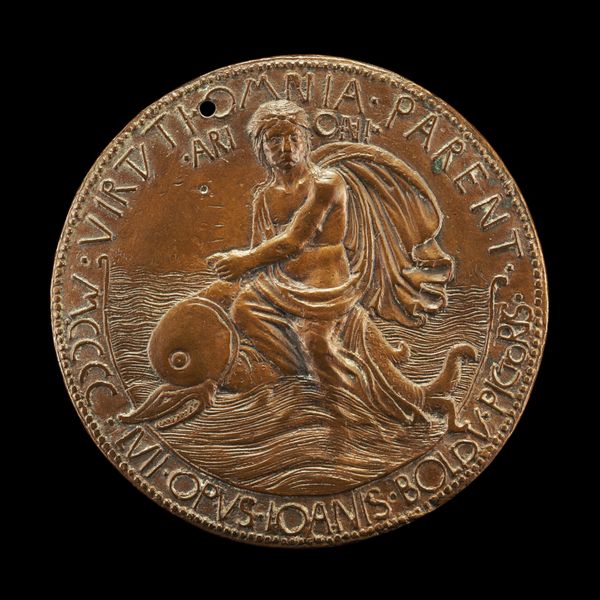![Kneeling Man with Cupid [reverse] by Giovanni Maria Pomedelli](/_next/image?url=https%3A%2F%2Fd2w8kbdekdi1gv.cloudfront.net%2FeyJidWNrZXQiOiAiYXJ0ZXJhLWltYWdlcy1idWNrZXQiLCAia2V5IjogImFydHdvcmtzLzQ3NzkyOGRmLWNiODAtNDAzOC04ZGNhLWY3YTM3YTY0YmU4OC80Nzc5MjhkZi1jYjgwLTQwMzgtOGRjYS1mN2EzN2E2NGJlODhfZnVsbC5qcGciLCAiZWRpdHMiOiB7InJlc2l6ZSI6IHsid2lkdGgiOiAxOTIwLCAiaGVpZ2h0IjogMTkyMCwgImZpdCI6ICJpbnNpZGUifX19&w=3840&q=75)
relief, bronze, sculpture
#
medal
#
allegory
#
stone
#
sculpture
#
relief
#
bronze
#
figuration
#
sculpting
#
sculpture
#
italian-renaissance
Dimensions: overall (diameter): 5.41 cm (2 1/8 in.) gross weight: 61.17 gr (0.135 lb.) axis: 12:00
Copyright: National Gallery of Art: CC0 1.0
Curator: This bronze relief, titled "Kneeling Man with Cupid," was created by Giovanni Maria Pomedelli around the 16th century. It's a striking example of Italian Renaissance sculpture, and depicts…well, let’s get your impressions first. Editor: I have to say, I feel this tug between sympathy and amusement. The kneeling man looks utterly burdened, practically crushed by whatever he's carrying, while Cupid stands so smugly, perched atop a globe, like some celestial manager. It almost feels like a comment on labor and power. Curator: It certainly is, although perhaps not precisely as we might read it today. The kneeling figure can be read as an allegorical figure, potentially representing humanity weighed down by worldly concerns. Notice the placement of Mercury's staff – the caduceus – to the side, an explicit reference to earthly affairs. Editor: Ah, now I see it! The staff does add a layer of complexity. So it's not just any burden, but specifically the weight of earthly matters that is contrasted against divine love? Clever symbolism! The way the artist positions Cupid, looking down benevolently, yet firmly, does suggest some direction being dictated to this "burdened" man, this allegory to earthly troubles. Curator: Precisely! These medals, you see, weren’t merely decorative. They often functioned as humanist declarations and portable statements reflecting their owner’s ideals or aspirations. The very act of owning and displaying something like this signified participation in certain intellectual circles. It served as an instant, recognizable marker. Editor: It makes me think, in a way, not much has changed in 500 years! People still curate these elaborate self-portraits for public consumption, and yes, a statement for an audience of similarly attuned fellows...although in very different mediums. How fascinating that some threads of humanity are preserved across half a millennium. Curator: Indeed. What resonates for me, I suppose, is how effectively Pomedelli encapsulates the inherent tensions between the material and the spiritual within the frame of something we might toss off as simple ornament. Editor: Absolutely. It's a tiny bronze window into Renaissance ideals, a dialogue between human toil and divine guidance and an amazing example of making your inner-self as "portable" as possible in a time capsule.
Comments
No comments
Be the first to comment and join the conversation on the ultimate creative platform.
